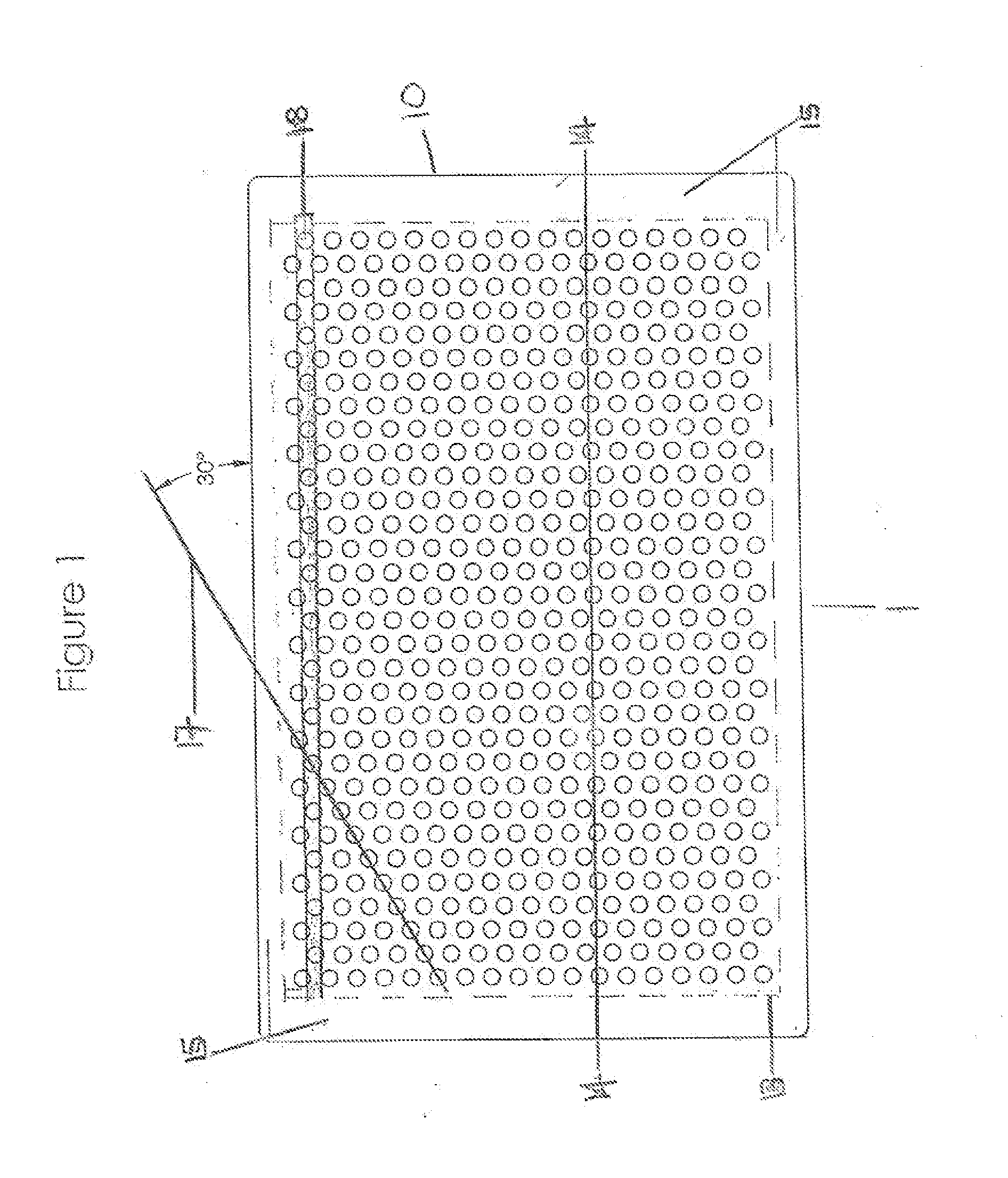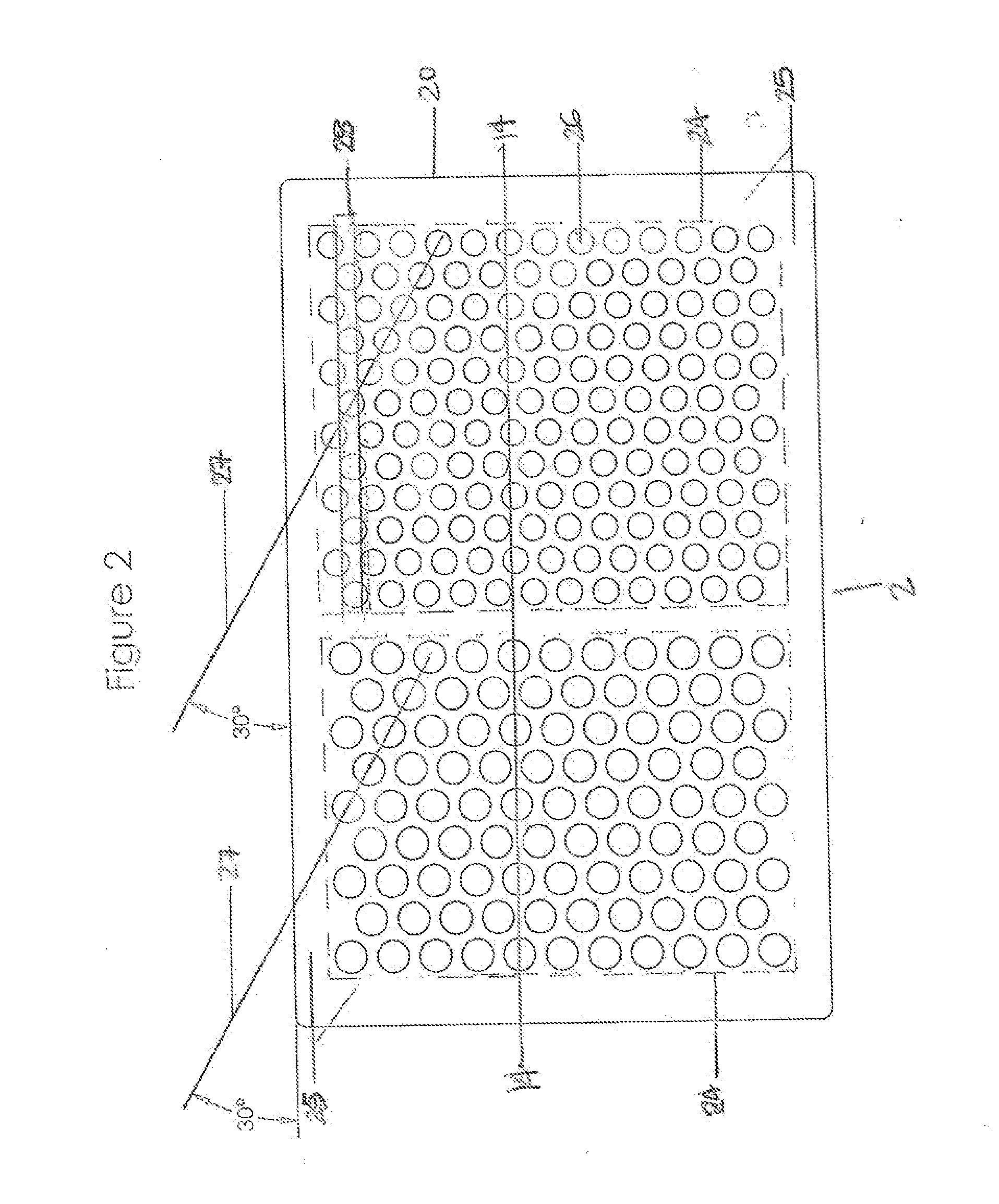Mould mat for producing bone cement pellets
a mould mat and pellet technology, applied in the field of mould mats and methods for producing bone cement pellets, can solve the problems of large area of the surface of the mould mat that does not contain any cavities, waste of expensive bone substitute materials, messy and time-consuming procedure for pasting cement into the cavities of the prior art, etc., to facilitate rapid and easy filling of cavities
- Summary
- Abstract
- Description
- Claims
- Application Information
AI Technical Summary
Benefits of technology
Problems solved by technology
Method used
Image
Examples
example 1
[0068]A two sided, flat rectangular mould mat having a width of between 72 mm-122 mm, a length of between 132 mm-179 mm and a thickness of between 6 mm-12 mm was produced using a flexible polymeric material, such as a silicone rubber or a thermoplastic elastomer (TPE). The first side contains an array of 560 cylindrical cavities of 3 mm diameter having a hemispherical closed end arranged in a hexagonal grid pattern with rows of cavities having a diagonal offset of about 30 degrees, as shown in FIG. 1. The second side contains two arrays of cylindrical cavities having a hemispherical closed end, one array consists of 150 cavities of 4.8 mm diameter and the other array consists of 95 cavities of 6 mm diameter. Both arrays are arranged in a hexagonal grid pattern with cavity rows having a diagonal offset of 30 degrees, as shown in FIG. 3.
example 2
[0069]A flat, rectangular mould mat was manufactured from a flexible silicone rubber having dimensions; width=10 cm, length=16 cm, thickness=0.8 cm, where both sides have a plurality of cavities for moulding bone cement pellets. The cavities on both sides are arranged in an array of rows and columns where the rows run across the width of the mould mat and the columns run down the length of the mould mat. Each adjacent row of cavities is offset towards the long edge of the mould mat such that each column of cavities then becomes non-parallel to the long axis of the mould mat. Off-setting each adjacent row by a distance equivalent to approximately half the diameter of a cavity results in the columns aligning with an axis that is approximately about 20 degrees to the long axis of the mould mat. All the cavities on a first side of the mould mat have a diameter of 3 mm and depth of 3.5 mm while all cavities on a second side of the mould mat have a diameter of 4.8 mm and depth of 5 mm. Al...
PUM
| Property | Measurement | Unit |
|---|---|---|
| diameter | aaaaa | aaaaa |
| thickness | aaaaa | aaaaa |
| width | aaaaa | aaaaa |
Abstract
Description
Claims
Application Information
 Login to View More
Login to View More - R&D
- Intellectual Property
- Life Sciences
- Materials
- Tech Scout
- Unparalleled Data Quality
- Higher Quality Content
- 60% Fewer Hallucinations
Browse by: Latest US Patents, China's latest patents, Technical Efficacy Thesaurus, Application Domain, Technology Topic, Popular Technical Reports.
© 2025 PatSnap. All rights reserved.Legal|Privacy policy|Modern Slavery Act Transparency Statement|Sitemap|About US| Contact US: help@patsnap.com



